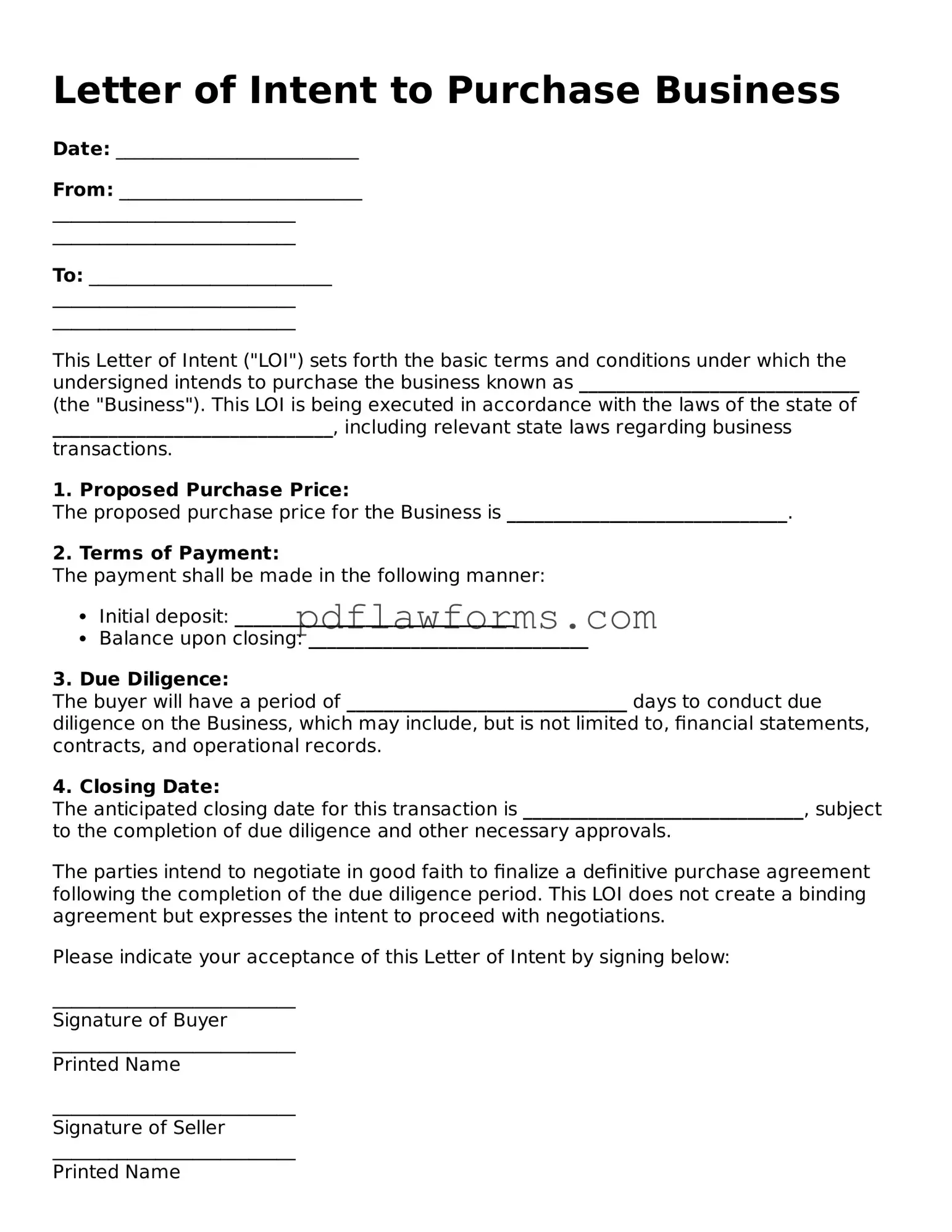Official Letter of Intent to Purchase Business Form
A Letter of Intent to Purchase Business is a document that outlines the preliminary agreement between a buyer and a seller regarding the sale of a business. This form serves as a foundation for negotiating terms and conditions before finalizing the sale. Understanding its importance can help ensure a smoother transaction process.
Ready to take the next step? Fill out the form by clicking the button below.
Make My Document Online
